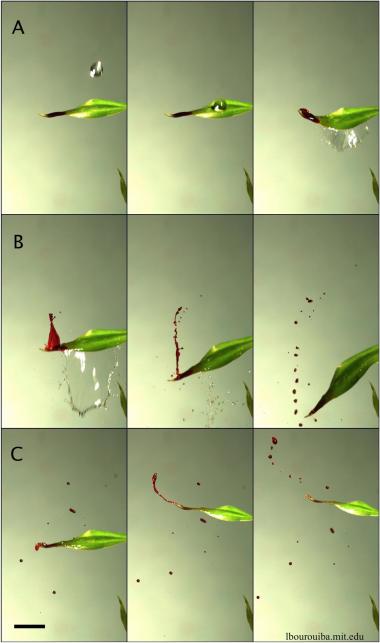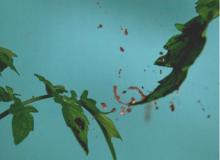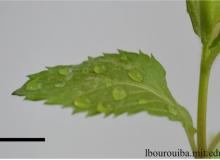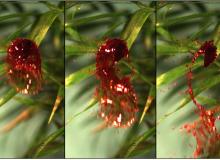Plant diseases are a major cause of losses of crops worldwide. Although rainfalls and foliar disease outbreaks are correlated, the detailed mechanism explaining their link remains poorly understood. The common assumption from phytopathology for such link is that a splash is generated upon impact of raindrops on contaminated liquid films coating sick leaves. We examine this assumption using direct high-speed visualizations of the interactions of raindrops and leaves over a range of plants. We show that films are seldom found on the surface of common leaves. We quantify the leaf- surface’s wetting properties, showing that sessile droplets instead of films are predominant on the surfaces of leaves. We find that the presence of sessile drops rather than that of films has important implications when coupled with the compliance of a leaf: it leads to a new physical picture consisting of two dominant rain-induced mechanisms of ejection of pathogens. The first involves a direct interaction between the fluids of the raindrop and the sessile drops via an off- centered splash. The second involves the indirect action of the raindrop that leads to the inertial detachment of the sessile drop via the leaf’s motion imparted by the impact of the raindrop. Both mechanisms are distinct from the commonly assumed scenario of splash-on-film in terms of outcome: they result in different fragmentation processes induced by surface tension, and, thus, different size-distributions of droplets ejected. This is the first time that modern direct high- speed visualizations of impacts on leaves are used to examine rain-induced ejection of pathogens at the level of a leaf and identify the inertial detachment and off-center splash ejections as alternatives to the classically assumed splash-on-film ejections of foliar pathogens.
MEDIA: MIT NEWS and MIT Spotlight; Nautilus science magazine; Science Magazine.




